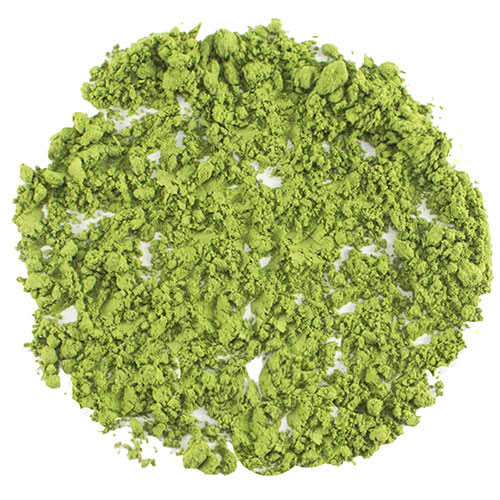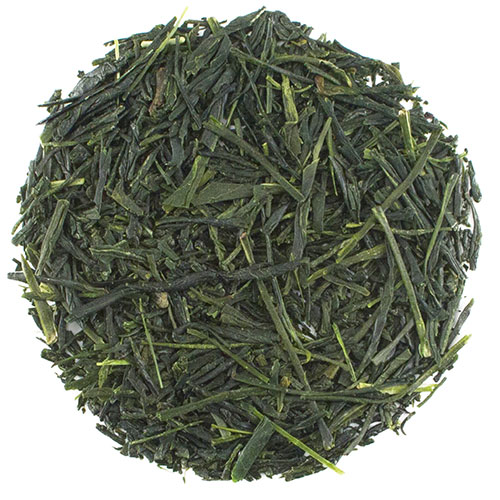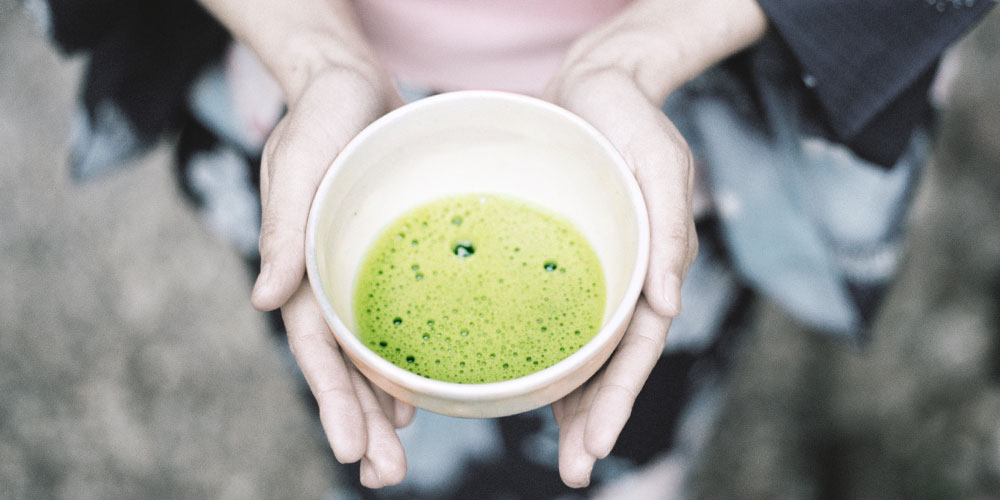We’re getting ready for International Tea Day on May 21 by exploring the teas and customs of brews from around the world.
After our celebration of South Africa’s Rooibos or Red Bush Tea, we travel northeast to Japan, whose recorded tea history started in the 8th century. Over time, two main types of Japanese green teas emerged: matcha and sencha.

Matcha Japanese Green Tea
In the 16th century, Uji tea growers began to shade tea leaves from the sun in the last few weeks of growth to increase their levels of chlorophyll and decrease tannin content. Then they plucked the leaves, dried them in a wok to halt oxidation, and ground them into a powder.
Today we enjoy the daily meditation of whisking high grade matcha tea into a frothy brew or throwing a scoop of culinary grade matcha tea into a smoothie for added health benefits (and a serious caffeine kick!).
Sencha Japanese Green Tea
By the 17th century, Japan picked up on the more informal approach to tea drinking popularized by Chinese sages. Rather than grind the tea leaves, they steeped them in hot water.

In 1737, an Uji-based tea grower named Nagatani Sōen developed the modern procedure now used to process loose leaf Japanese green teas. After plucking, the tea leaves are steamed, then rolled into narrow needles and dried in an oven. This helps retain their vibrant green color and fresh, grassy taste. This processing style called sencha, or “boiled tea”, is currently used for about 80% of Japanese teas.
Japanese teas are generally classified according to their type of cultivation, processing method and regional origin. From a prized Spring picking (Shincha) to an approachable every day offering (Kukicha), we invite you to explore the landscape of sweet, umami flavors that Japanese loose leaf teas offer.
Japanese Green Tea Heath Benefits
Whether you enjoy powdered or loose leaf Japanese green tea, you’ll receive a lot of potential health benefits:
- The polyphenol antioxidants in green tea have been shown to reduce inflammation and protect cells from damage, including aging.
- The powerful antioxidant Epigallocatechin Galate (EGCG) in Japanese green tea may protect against cardiovascular and metabolic diseases.
- Green tea may boost metabolism and prevent diabetes.
What’s your favorite Japanese green tea? Let us know in the comments below!



Donna Powers
13 May 2021I like Matcha Tea, however, I do not feel I have experienced the full appreciation of Matcha. I have been using a tea bag from Lipton that claims it is Matcha Tea. When looking over my The Tea smith information on Matcha Tea powder and how to make it. I am now aware that I have not truly experienced the Matcha Tea as it true purpose. Therefore I since I do love drinking tea I will experience the true nature of this delight in it proper form.